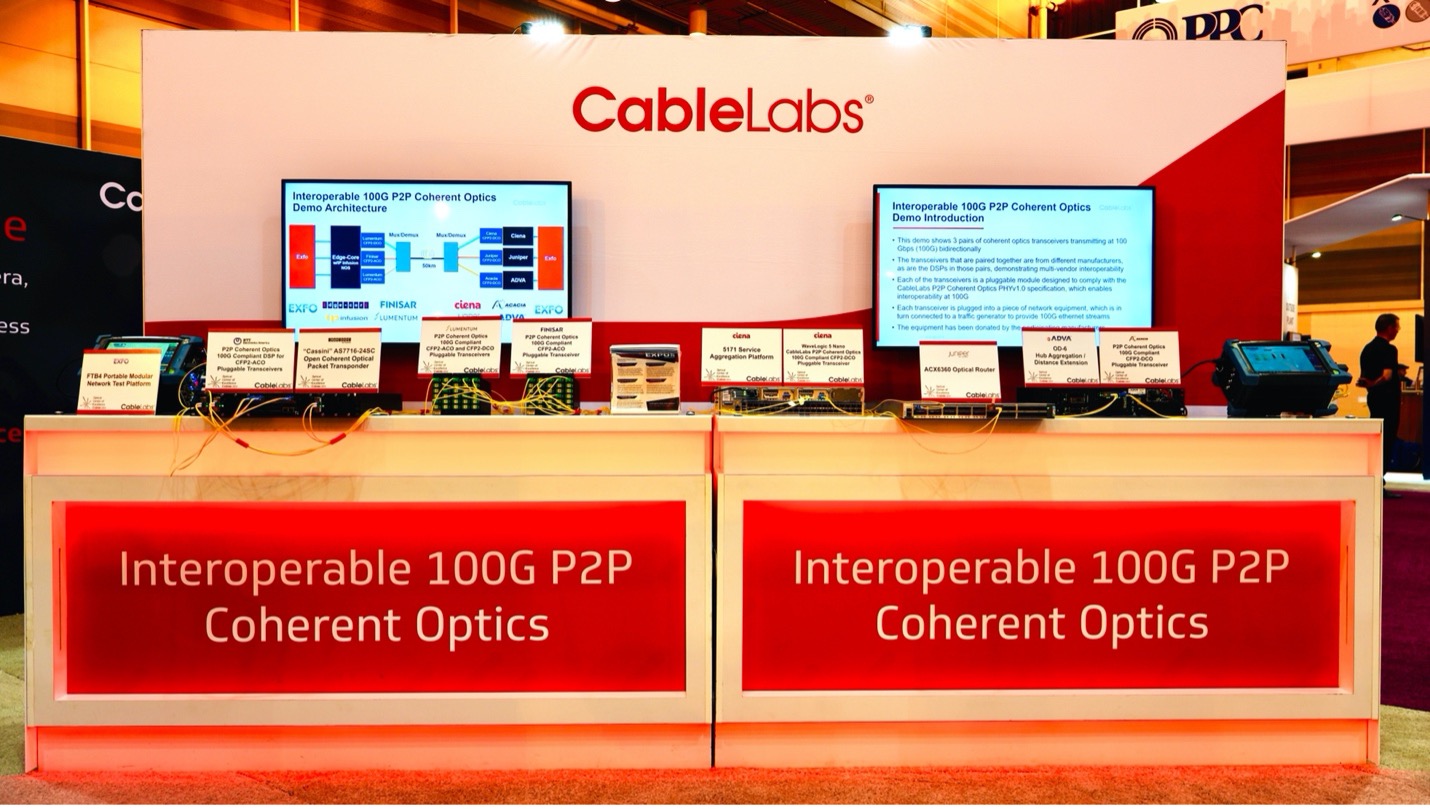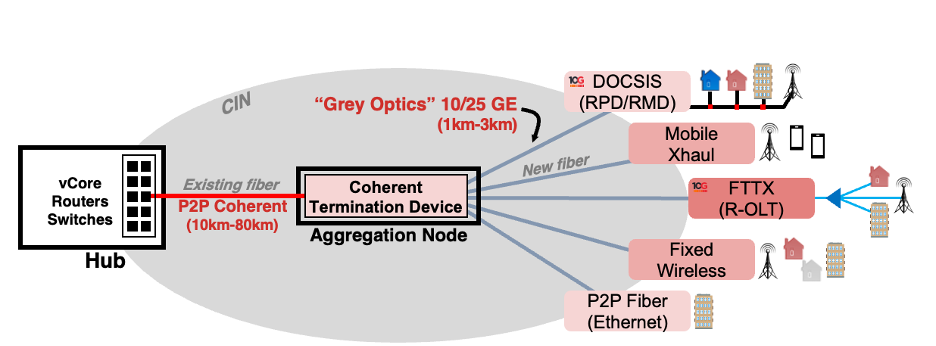Wired
Finishing the P2P Coherent Optics Puzzle

This past June, CableLabs publicly released the first issued version of the Coherent Termination Device (CTD) Requirements Specification. The same month, the Institute of Electrical and Electronics Engineers (IEEE) Standards Association (SA) approved amendment 802.3ct-2021, which defines 100G Ethernet using coherent optics. Combined with previous point-to-point (P2P) coherent optics specifications released by CableLabs, these two events represent two of the final pieces of the puzzle for enabling low cost, interoperable, coherent optics solutions for cable operators.
Coherent Termination Device
CableLabs has developed a series of specifications to enable the development of interoperable transceivers using P2P coherent optics that are optimized for cable access networks, including operation at 100G and 200G per wavelength. This work was highly successful; there are transceivers compliant with the CableLabs PHYv1.0 specification (100G operation) as demonstrated at interop events held pre-pandemic, and transceivers compliant with the PHYv2.0 specification are in development. Additionally, routers and switches that those transceivers can be plugged into also exist, as seen at the demonstration CableLabs hosted at SCTE Expo 2019 in New Orleans.

However, there’s one key thing that’s unique to a cable access network deployment as compared to most other P2P coherent optics deployments to date: one end of the link sits outdoors. And while some existing solutions could operate in the temperature ranges required for an outdoor environment, they had to be installed in a street cabinet vs. the type of weatherproof enclosure (typically a clamshell box) that is typically used by many cable operators.
That device is what we refer to as a CTD that resides in an Aggregation Node, as shown in the figure below. The CTD for an Aggregation Node was a missing puzzle piece!

In order to address this issue, CableLabs worked with our members to develop the CTD Requirements Specification. This specification contains a set of requirements that are common across multiple different cable operators, representing a broad consensus on the definition for several critical aspects of a CTD. That in turn provides some assurance to manufacturers that if they build a CTD that meets those requirements they should find a broad market for the device.
Some key highlights of those requirements include:
- A minimum of 2 line-side ports per CTD that support pluggable coherent optics transceiver modules
- A minimum of 12 (and recommendation for 16) client-side ports per CTD that support 10G and/or 25 transceiver modules
- Layer 2 (switching) and/or Layer 3 (routing) support
- Guidance on power sizing and efficiency
- Enclosures that meet IP66 requirements
- Operation in external ambient temperatures from -40 to +60 degrees C
IEEE 802.3ct-2021
One of the keys for enabling the use of P2P coherent optics in cable operator networks reducing cost as much as possible, which is why that has been a focus at CableLabs. Both of the P2P Coherent Optics PHY specifications were written with cost in mind by incorporating inputs from suppliers, identifying optimizations for cable networks that will enable reduced cost devices, and promoting interoperability (leading to scale and competition).
Another way to drive scale is to encourage adoption by other groups and industries. For that reason, CableLabs decided to support and participate in an effort within the IEEE 802.3 Ethernet Working Group to define a standard for specifying 100G operation per wavelength using coherent optics. In particular, CableLabs wanted to ensure that manufacturers would be able to develop devices that complied not only with our CableLabs specifications, but also with the new IEEE standard.
A review of the new 802.3ct amendment suggests that goal has been achieved, and as a result, it should be possible for manufacturers to build a single device that complies with requirements from CableLabs, IEEE, ITU and OpenROADM, meaning there is a huge market for coherent optics equipment that manufacturers can take advantage of without having to build multiple different devices.
Puzzle Pieces Coming Together
With these two puzzle pieces now complete, the picture and opportunity for using P2P coherent optics in cable operator networks is really coming together. Compliant transceiver modules and equipment suitable for indoor facilities (such as hubs and headends) are already available, and CTDs are expected later this year or early next year, enabling deployments in the not-too-distant future. Better still, it’s becoming clear that there are architectures and applications that can leverage CTDs beyond just cable networks — such as for supporting mobile network deployments — meaning there’s likely a broad, nascent market just waiting to take off. Keep an eye on this space – things are just getting started.




